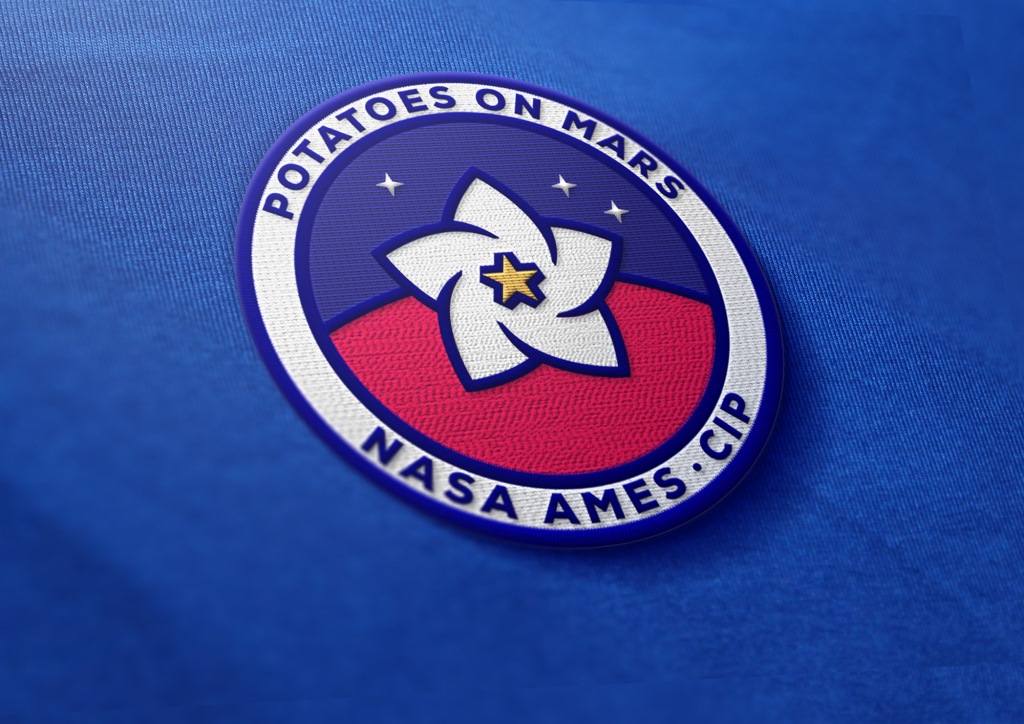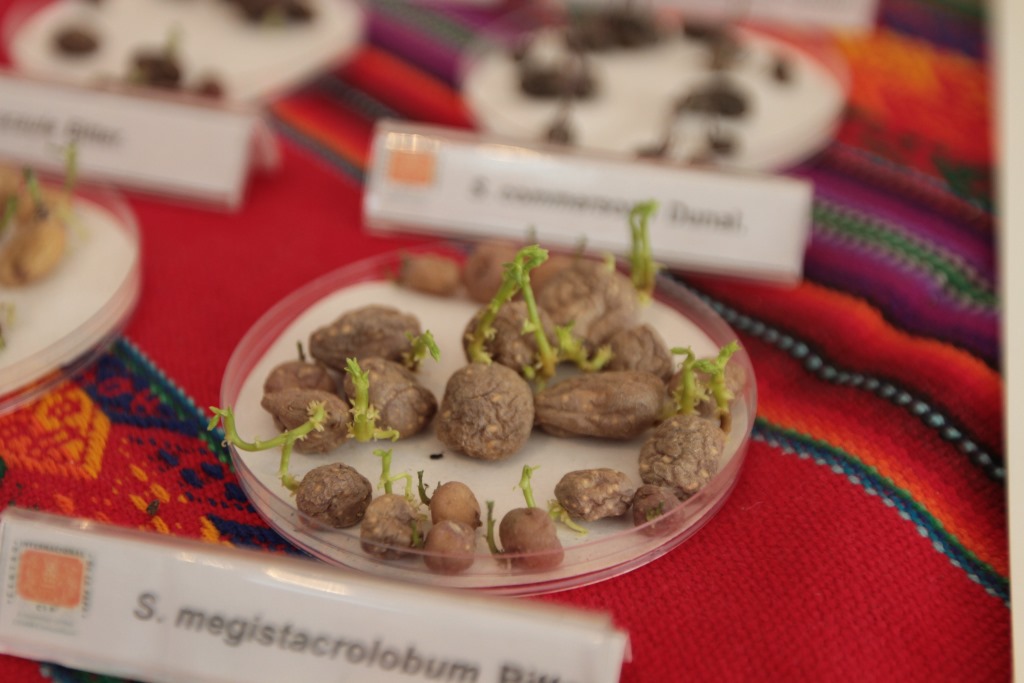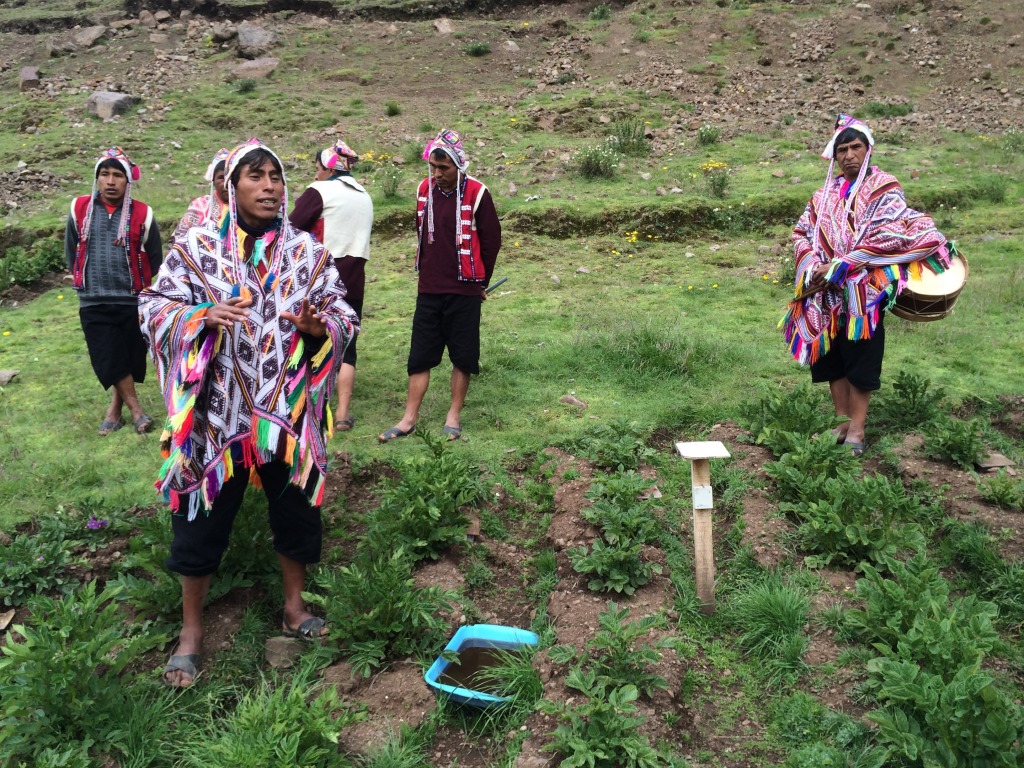
Lima, Peru, December 18, 2015: A team of world-class scientists will grow potatoes under Martian conditions in a bid to save millions of lives.
The experiment, led by the International Potato Center (CIP) and NASA, is a major step towards building a controlled dome on Mars capable of farming the invaluable crop in order to demonstrate that potatoes can be grown in the most inhospitable environments.
The goal is to raise awareness of the incredible resilience of potatoes, and fund further research and farming in devastated areas across the globe where malnutrition and poverty are rife and climbing.
“How better to learn about climate change than by growing crops on a planet that died two billion years ago?” said Joel Ranck, CIP Head of Communications. “We need people to understand that if we can grow potatoes in extreme conditions like those on Mars, we can save lives on Earth.”
Currently, famine affects 842 million people around the world. Global warming creates poor soil conditions and increases the prevalence of pests and disease which have the combined effect of limiting harvests globally but particularly in vulnerable areas where poverty, malnutrition and food insecurity already exist.
For years, Peru-based global research and development organization, CIP, has been testing the robustness of potatoes in the most unlikely places. Beyond the ability to thrive in such challenging conditions, they are also highly nutritious. An excellent source of vitamin C, iron, and zinc, they contain critical micronutrients missing in vulnerable communities globally. CIP’s scientists use research and development innovations to fight malnutrition, lift people out of poverty and increase food security around the world.
Understanding atmospheric changes on the surface of Mars will help build more dynamic and accurate simulation centers on Earth, providing further research for both CIP and NASA, who are looking to pioneer space farming for future manned missions to other planets and moons in our solar system.
“I am excited to put potatoes on Mars and even more so that we can use a simulated Martian terrain so close to the area where potatoes originated.” said Julio E. Valdivia-Silva, SETI Researcher Associate of NASA, who is leading the project’s science team.
The project is led by Will Rust, Creative Director of Memac Ogilvy Dubai. He conceived the idea while working closely with CIP to spread the word of how the potato could be the answer to global hunger. Will connected the CIP and NASA teams to initiate this project to support life on Mars and to bring direct benefit to smallholder farmers on Earth who deserve more food secure futures as well.


By using soils almost identical to those found on Mars, sourced from the Pampas de La Joya Desert in Peru, the teams will replicate Martian atmospheric conditions in a laboratory and grow potatoes. The increased levels of carbon dioxide will benefit the crop, whose yield is two to four times that of a regular grain crop under normal Earth conditions. The Martian atmosphere is near 95 per cent carbon dioxide.
“The extraordinary efforts of the team have set the bar for extraterrestrial farming. The idea of growing food for human colonies in space could be a reality very soon.” said Chris McKay, planetary scientist of the NASA Ames research centre.
Melissa Guzman, Astrobiologist at NASA Ames, stated, “The image of students building plant growth payloads and communicating virtually from labs in California, Lima, and Dubai is exciting for the future of planetary exploration and astrobiology.
“We see the science, educational, and humanitarian goals as being intertwined. In the process of working together toward establishing a community on Mars, our students will also be establishing a community on Earth,” she added.
For more information please contact:
Press Contact:
Will Rust
Executive Creative Director
OgilvyOne Dubai
will.rust@ogilvy.com
+971 56 398 9468 (Cellphone)
About CIP:
The International Potato Center, known by its Spanish acronym CIP, was founded in 1971 as a root and tuber research-for-development institution delivering sustainable solutions to the pressing world problems of hunger, poverty, and the degradation of natural resources. CIP is truly a global center, with headquarters in Lima, Peru and offices in 20 developing countries across Asia, Africa, and Latin America. Working closely with our partners, CIP seeks to achieve food security, increased well-being, and gender equity for poor people in the developing world. CIP furthers its mission through rigorous research, innovation in science and technology, and capacity strengthening regarding root and tuber farming and food systems.
CIP is part of the CGIAR Consortium, a global partnership that unites organizations engaged in research for a food secure future. CGIAR research is dedicated to reducing rural poverty, increasing food security, improving human health and nutrition, and ensuring more sustainable management of natural resources. Donors include individual countries, major foundations, and international entities
Explanations and supporting images:
Photo-1
Potatoes are clonally propagated, meaning that potatoes leftover and chosen from the recent harvest are saved for the next planting season. The potatoes saved are genetically identical to the potatoes planted the season before. This is an important aspect of the potato as a food security crop because if disease free and high quality planting material is used it can be reused in subsequent seasons if cared for properly.
Photo-2
The potato’s center of diversity is in the Andean region. It was domesticated roughly 3800 years ago along the shores of Lake Titicaca in Peru. Farmers today use the traditional knowledge of their ancestors to grow this Andean treasure. Still the potato has its vulnerabilities, climate change being one of the most severe challenges. In Potato Park in Pisac, Peru near Cusco, farmers use ancient methods and modern research to learn more about how climate change will affect potato as the Earth’s temperature increases. These Quechua-speaking farmers demonstrate one of several test plots planted one hundred meters apart ascending up the slope of a mountain. They monitor temperature, rainfall, and pests and diseases to see which potato varieties perform best under the conditions at each level of altitude. In general Potato requires a period of cold weather to perform best. Slowly that critical temperature required is moving up the hillside, requiring farmers to cultivate fields at higher and higher elevations as pests and diseases thrive in the warmer conditions at elevations in which they had not previously existed.
Photo-3
Conserving the genetic resources of potato and sweetpotato has been a major priority of CIP since its founding in 1971. CIP maintains the largest collections of potato (more than 4000 varieties) and sweetpotato (more than 8000 varieties) in the world. The genebank holds over 80% of the world’s native potato and sweetpotato cultivars and over 80% of the known species of wild potato. It also maintains more than 1,500 accessions of native Andean root and tuber crops (ARTCs). CIP conserves and preserves the genetic diversity of these valuable crops so that future generations can benefit from the amazing benefits of these treasured crops – much of which is yet to be discovered. By maintaining these collections, CIP conserves this diversity in perpetuity so new discoveries can be made.
CIP is the custodian of the world’s largest in vitro genebank, and is the first to obtain International Standards Organization (ISO) accreditation for safe and secure germplasm movement. The genebank maintains clonal and seed collections and houses one of the world’s leading herbarium collections. Maintained as a global public good under the International Treaty on Plant Genetic Resources for Food and Agriculture, CIP’s germplasm is available for free to developing countries. It is used in breeding programs in over 100 countries.
NASA-Curiosity
As more and more space-faring nations emerge in the near future and in the coming decades, encouraging global student collaboration will enliven planetary missions and a future workforce, cut billion-dollar projects into the thousands, and create a synergy of international knowledge and resources. The CubeSat, student-built project model is an important shift in the way that planetary science and astrobiology missions have traditionally been conducted. Our concept of this model embraces open-sourced information, do-it-yourself implementation, and international collaboration.
Pampas-De-La-Joya
The distribution of living organisms, organic matter, and chemical properties in Mars-like environments on Earth can be used as a model to guide the investigation of possible habitable environments on Mars. The place known informally as the “Mar de Cuarzo” (Sea of Quartz) in the Pampas de La Joya desert in southern Peru (between 16°S and 17°S latitude), contains soils with characteristics very similar to those found on the Martian surface.
